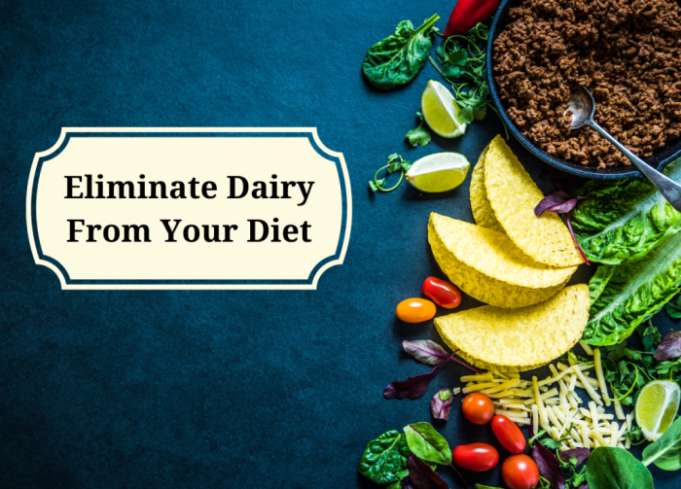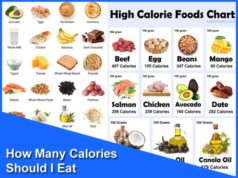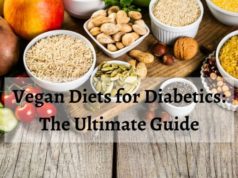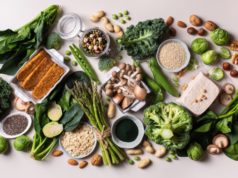How to cut dairy out of your diet is a journey that many embark on for various reasons, from managing allergies and intolerances to embracing a plant-based lifestyle. Whether you’re motivated by health concerns, ethical considerations, or simply seeking a change, understanding the process and finding suitable alternatives is key to success. This guide will delve into the nuances of dairy-free living, offering practical advice and insightful information to navigate this transition seamlessly.
From understanding the nutritional benefits and drawbacks of dairy to exploring the reasons behind its elimination, we’ll cover the essential aspects of transitioning to a dairy-free diet. We’ll also guide you through creating a balanced meal plan, identifying hidden sources of dairy, and discovering delicious dairy-free alternatives. This comprehensive guide will equip you with the knowledge and tools to embark on a dairy-free journey with confidence.
Understanding Dairy and its Role in the Diet: How To Cut Dairy Out Of Your Diet
Dairy products have been a staple in many diets for centuries, and for good reason. They are a rich source of essential nutrients, including calcium, vitamin D, and protein. However, in recent years, there has been increasing scrutiny of dairy consumption, with some people choosing to eliminate it from their diets altogether. This section explores the nutritional benefits and potential drawbacks of dairy, and provides examples of common dairy products and their alternatives.
Nutritional Benefits of Dairy
Dairy products are a valuable source of several essential nutrients. Calcium is crucial for bone health, playing a key role in building and maintaining strong bones. Vitamin D is essential for calcium absorption and bone health, and it also supports immune function. Protein is a vital building block for muscles, tissues, and enzymes, and it plays a role in regulating blood sugar levels. Additionally, dairy products contain other beneficial nutrients like potassium, phosphorus, and riboflavin.
Potential Drawbacks of Consuming Dairy
While dairy products offer nutritional benefits, they also have potential drawbacks. Some individuals experience lactose intolerance, a condition where the body has difficulty digesting lactose, the sugar found in dairy. This can lead to symptoms like bloating, gas, and diarrhea.
Additionally, some people are allergic to milk protein, which can cause a range of symptoms from mild skin reactions to severe anaphylaxis. There is also growing concern about the potential link between dairy consumption and certain health conditions, such as acne, heart disease, and some types of cancer. However, more research is needed to confirm these connections.
Common Dairy Products and their Alternatives
Dairy products are diverse, ranging from milk and yogurt to cheese and ice cream.
- Milk is a versatile dairy product used in beverages, cooking, and baking. Alternatives include almond milk, soy milk, oat milk, and coconut milk.
- Yogurt is a fermented dairy product that is a good source of probiotics. Alternatives include coconut yogurt, almond yogurt, and soy yogurt.
- Cheese is a popular dairy product that comes in a wide variety of flavors and textures. Alternatives include vegan cheese made from cashews, almonds, or soy.
- Ice cream is a sweet treat that is often made with dairy. Alternatives include sorbet, fruit ice, and vegan ice cream made from coconut milk, almond milk, or soy milk.
Reasons for Cutting Dairy
Many individuals choose to eliminate dairy from their diet for various reasons, ranging from health concerns to ethical considerations. Let’s delve into some of the most common motivations behind this dietary choice.
Dairy Intolerances and Allergies
Dairy intolerance and allergies are common reasons for excluding dairy from the diet. These conditions are distinct, with different underlying mechanisms.
Dairy Intolerance
Dairy intolerance is a digestive issue caused by the inability to properly digest lactose, the sugar found in milk and other dairy products. Lactose intolerance is due to insufficient levels of the enzyme lactase, which is responsible for breaking down lactose. Without sufficient lactase, lactose passes undigested into the large intestine, where it is fermented by bacteria, leading to symptoms such as bloating, gas, diarrhea, and abdominal cramps.
Dairy Allergy
Dairy allergy is an immune response to certain proteins found in cow’s milk, such as casein and whey. When a person with a dairy allergy consumes dairy products, their immune system mistakenly identifies these proteins as harmful and releases histamine and other chemicals, triggering symptoms like hives, eczema, wheezing, and even anaphylaxis, a life-threatening allergic reaction.
Ethical Concerns
Ethical concerns regarding dairy consumption are becoming increasingly prominent. Many individuals choose to avoid dairy due to their beliefs about animal welfare, environmental impact, and the potential health risks associated with industrial dairy production.
Animal Welfare
Dairy production often involves intensive farming practices that can raise concerns about animal welfare. Concerns include:
- Forced insemination of cows to produce milk
- Early separation of calves from their mothers
- Confined living conditions for cows
- The use of antibiotics and hormones to increase milk production
Environmental Impact
Dairy production has a significant environmental footprint, contributing to:
- Greenhouse gas emissions, particularly methane from cows
- Deforestation for land to raise cattle
- Water pollution from animal waste and agricultural runoff
- The depletion of natural resources
Health Concerns
Some individuals choose to avoid dairy due to concerns about potential health risks associated with industrial dairy production. These concerns include:
- Hormone residues in milk
- Antibiotic resistance
- The potential link between dairy consumption and certain cancers
Planning a Dairy-Free Diet
Going dairy-free can seem daunting at first, but with a little planning and preparation, it can be a smooth transition. This section will guide you through designing a dairy-free meal plan, creating a grocery list with dairy-free alternatives, and identifying hidden sources of dairy in processed foods.
Creating a Dairy-Free Meal Plan
A dairy-free meal plan should be balanced and include a variety of foods from all food groups. Here’s a sample meal plan:
- Breakfast: Oatmeal with fruit and nuts, tofu scramble with vegetables, or a smoothie with non-dairy milk, fruit, and protein powder.
- Lunch: Salad with grilled chicken or tofu, lentil soup, or a veggie burger on a whole-wheat bun.
- Dinner: Stir-fry with vegetables and tofu or tempeh, lentil loaf, or baked salmon with roasted vegetables.
- Snacks: Fruits, vegetables, nuts, seeds, or dairy-free yogurt.
Creating a Dairy-Free Grocery List, How to cut dairy out of your diet
To ensure you have the necessary ingredients for your dairy-free meals, create a grocery list that includes dairy-free alternatives. Here are some essential items:
- Non-dairy milk: Almond milk, soy milk, coconut milk, oat milk, rice milk, or hemp milk.
- Non-dairy yogurt: Coconut yogurt, almond yogurt, soy yogurt, or cashew yogurt.
- Dairy-free cheese: Vegan cheese made from cashew, soy, or almond milk.
- Dairy-free butter: Vegan butter made from coconut oil, palm oil, or shea butter.
- Dairy-free ice cream: Coconut ice cream, almond ice cream, soy ice cream, or cashew ice cream.
Identifying Hidden Sources of Dairy in Processed Foods
Dairy can be found in unexpected places, so it’s important to read food labels carefully. Common hidden sources of dairy include:
- Whey protein: Found in protein bars, shakes, and supplements.
- Casein: Found in some processed meats, soups, and sauces.
- Lactose: Found in some breads, crackers, and cereals.
- Milk solids: Found in some candies, baked goods, and processed snacks.
Dairy-Free Substitutions
Transitioning to a dairy-free diet often involves finding alternatives to your favorite dairy products. Thankfully, there are plenty of plant-based options available that can satisfy your cravings and provide essential nutrients.
Dairy-Free Substitutes for Common Dairy Products
This table compares some popular dairy products with their plant-based alternatives:
| Dairy Product | Plant-Based Alternative | Notes |
|---|---|---|
| Milk | Almond milk, soy milk, oat milk, coconut milk, rice milk | Each milk alternative has a unique flavor and nutritional profile. Almond milk is low in calories and fat, while soy milk is a good source of protein. Oat milk is creamy and has a mild flavor, while coconut milk is rich and flavorful. Rice milk is hypoallergenic and suitable for those with allergies. |
| Yogurt | Coconut yogurt, almond yogurt, soy yogurt, cashew yogurt | Plant-based yogurts are often thicker and tangier than dairy yogurt. Coconut yogurt is a popular choice for its sweet and slightly tangy flavor. Almond yogurt is a good source of calcium and vitamin D. Soy yogurt is a versatile option that can be used in both sweet and savory dishes. Cashew yogurt is creamy and smooth, making it a good choice for smoothies and dips. |
| Cheese | Vegan cheese made from cashews, almonds, tofu, or nutritional yeast | Vegan cheese comes in a variety of flavors and textures, from mild cheddar to sharp blue cheese. Cashew-based cheeses are often creamy and smooth, while almond-based cheeses have a nutty flavor. Tofu cheese is a good source of protein and can be used in both sweet and savory dishes. Nutritional yeast is a popular ingredient in vegan cheese sauces and dips, as it provides a cheesy flavor. |
| Butter | Vegan butter made from coconut oil, palm oil, or shea butter | Vegan butter is a good substitute for dairy butter in baking and cooking. Coconut butter is a popular choice for its rich flavor and high melting point. Palm oil is a versatile oil that can be used in both sweet and savory dishes. Shea butter is a natural moisturizer that can be used in skincare products. |
| Cream | Coconut cream, almond cream, cashew cream | Plant-based creams are often thicker and richer than dairy cream. Coconut cream is a popular choice for its sweet and slightly tangy flavor. Almond cream is a good source of calcium and vitamin D. Cashew cream is creamy and smooth, making it a good choice for smoothies and dips. |
Dairy-Free Cheese Sauces
There are many ways to make delicious dairy-free cheese sauces. Here are some tips:
* Use a plant-based cheese alternative: Cashew-based cheeses, nutritional yeast, and tofu cheese are all good options for making dairy-free cheese sauces.
* Add a thickener: Cornstarch, arrowroot powder, or tapioca flour can be used to thicken the sauce.
* Season to taste: Salt, pepper, garlic powder, onion powder, and herbs can all be used to enhance the flavor of the sauce.
Here’s a simple recipe for a dairy-free cheese sauce:
Ingredients:
* 1 cup cashews, soaked in hot water for 30 minutes
* 1 cup water
* 1/4 cup nutritional yeast
* 2 tablespoons lemon juice
* 1 teaspoon garlic powder
* 1/2 teaspoon onion powder
* Salt and pepper to tasteInstructions:
1. Drain the cashews and add them to a blender with the water, nutritional yeast, lemon juice, garlic powder, and onion powder.
2. Blend until smooth.
3. Season with salt and pepper to taste.
4. Heat the sauce over medium heat until it is warm and bubbly.
5. Serve over pasta, vegetables, or your favorite dishes.
Dairy-Free Desserts
Dairy-free desserts are becoming increasingly popular. Here are some tips for making dairy-free desserts:
* Use plant-based milk alternatives: Almond milk, soy milk, oat milk, and coconut milk can all be used in place of dairy milk in desserts.
* Use plant-based butter alternatives: Coconut oil, palm oil, and shea butter can all be used in place of dairy butter in desserts.
* Use plant-based sweeteners: Maple syrup, agave nectar, and coconut sugar are all good alternatives to sugar.
Here’s a simple recipe for a dairy-free chocolate mousse:
Ingredients:
* 1 can (13.5 ounces) full-fat coconut milk, refrigerated overnight
* 1/2 cup unsweetened cocoa powder
* 1/4 cup maple syrup
* 1 teaspoon vanilla extractInstructions:
1. Scoop out the thick coconut cream from the top of the can.
2. In a blender, combine the coconut cream, cocoa powder, maple syrup, and vanilla extract.
3. Blend until smooth.
4. Divide the mousse into serving dishes and refrigerate for at least 2 hours.
5. Enjoy!
Nutritional Considerations
While cutting out dairy can be beneficial for some, it’s crucial to ensure you’re still getting essential nutrients like calcium and vitamin D. These nutrients are vital for bone health, muscle function, and overall well-being.
Calcium Sources
Calcium is essential for strong bones and teeth. While dairy is a rich source, there are many other ways to get enough calcium in your diet.
- Leafy Green Vegetables: Kale, collard greens, spinach, and bok choy are excellent sources of calcium.
- Fortified Foods: Many plant-based milk alternatives, such as almond milk, soy milk, and oat milk, are fortified with calcium.
- Other Vegetables: Broccoli, Brussels sprouts, and turnips are good sources of calcium.
- Tofu: Tofu is a versatile protein source that’s also rich in calcium.
- Calcium-Fortified Foods: Look for fortified orange juice, cereals, and bread.
Vitamin D Sources
Vitamin D is essential for calcium absorption and bone health. It’s also important for immune function and cell growth.
- Sunlight: Spending time outdoors in the sun is the most natural way to get vitamin D.
- Fortified Foods: Many plant-based milk alternatives, orange juice, and cereals are fortified with vitamin D.
- Fatty Fish: Salmon, tuna, and mackerel are good sources of vitamin D.
- Mushrooms: Some mushrooms, particularly shiitake and oyster mushrooms, are good sources of vitamin D when exposed to sunlight.
Maintaining a Balanced Diet
It’s important to focus on a balanced and varied diet when cutting out dairy.
- Whole Grains: Choose whole grains over refined grains for fiber, vitamins, and minerals.
- Fruits and Vegetables: Aim for a variety of colorful fruits and vegetables for antioxidants, vitamins, and minerals.
- Legumes: Beans, lentils, and peas are good sources of protein, fiber, and iron.
- Nuts and Seeds: Include nuts and seeds in your diet for healthy fats, protein, and fiber.
- Hydration: Drink plenty of water throughout the day to stay hydrated.
Potential Challenges and Solutions
Switching to a dairy-free diet can be a significant change, and you might encounter some challenges along the way. This section will explore common hurdles and provide practical solutions to help you navigate the transition smoothly.
Managing Cravings
Cravings for dairy products are common, especially during the initial stages of transitioning to a dairy-free lifestyle. The following strategies can help manage these cravings:
- Identify triggers: Pay attention to when you crave dairy the most, whether it’s certain times of day, specific emotions, or particular situations. This awareness can help you anticipate and plan for those moments.
- Explore alternatives: Experiment with dairy-free substitutes to find satisfying replacements. Many dairy-free options are available, from plant-based milks to cheeses, yogurts, and ice creams.
- Distract yourself: When cravings hit, try distracting yourself with activities you enjoy, such as reading, exercising, or spending time with loved ones.
- Hydrate: Sometimes, thirst can be mistaken for hunger. Drinking plenty of water can help reduce cravings and keep you feeling full.
- Gradually reduce intake: Instead of eliminating dairy abruptly, gradually reduce your consumption over time. This approach can make the transition less challenging.
Avoiding Dietary Pitfalls
It’s crucial to be mindful of hidden dairy ingredients in processed foods. These are some strategies to avoid these pitfalls:
- Read labels carefully: Always check food labels for ingredients like milk, whey, casein, lactose, and other dairy derivatives. These can be found in unexpected products, including bread, sauces, and processed meats.
- Ask questions: When dining out, don’t hesitate to ask your server or chef about the ingredients in dishes, especially if they are not clearly listed on the menu. Be specific about your dairy allergy or intolerance.
- Choose dairy-free options: Opt for dairy-free versions of your favorite foods, such as plant-based milk, yogurt, and cheese. Many brands offer dairy-free alternatives that closely resemble the taste and texture of their dairy counterparts.
Maintaining Social Interactions
Following a dairy-free diet doesn’t have to isolate you socially. Here are some tips for managing social interactions:
- Communicate your needs: Be upfront and honest about your dairy-free lifestyle with friends, family, and colleagues. Let them know what you can and cannot eat, and encourage them to be understanding and accommodating.
- Offer alternatives: If you’re invited to a potluck or gathering, offer to bring a dairy-free dish to share. This shows your willingness to participate and makes the event more inclusive for everyone.
- Plan ahead: When attending social events, plan ahead by checking the menu or contacting the host to confirm dairy-free options. This will help you avoid surprises and ensure you have something to eat.
- Focus on the experience: Remember that social interactions are about more than just food. Focus on connecting with people and enjoying the company, even if you have to make some adjustments to your diet.
Long-Term Benefits of a Dairy-Free Diet
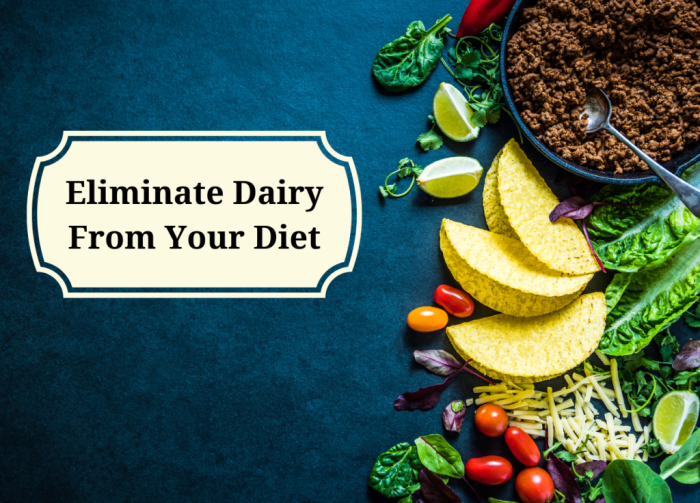
Embracing a dairy-free lifestyle can offer a range of long-term health benefits, promoting overall well-being and potentially mitigating the risks associated with dairy consumption.
Improved Digestion and Reduced Inflammation
Dairy products often contain lactose, a sugar that some individuals struggle to digest due to a lack of the enzyme lactase. This can lead to digestive discomfort, bloating, gas, and diarrhea. By eliminating dairy, individuals may experience a significant improvement in their digestive health, reducing these unpleasant symptoms. Moreover, dairy can trigger inflammation in some people, contributing to conditions like acne, eczema, and joint pain. A dairy-free diet can help to reduce inflammation throughout the body, potentially alleviating these symptoms and improving overall health.
Closing Notes
Embarking on a dairy-free journey can be empowering and rewarding, offering a chance to reconnect with your body and discover a new way of eating. By understanding the reasons behind your decision, planning your meals thoughtfully, and exploring the vast array of dairy-free alternatives, you can embrace a fulfilling and healthy lifestyle without dairy. Remember, this guide serves as a starting point, and your individual needs and preferences may require further exploration. With a little planning and creativity, you can enjoy a delicious and dairy-free life.
FAQs
What are some common dairy-free alternatives for milk?
Popular alternatives include almond milk, soy milk, coconut milk, oat milk, and rice milk. Choose the one that best suits your taste and dietary needs.
Can I still get enough calcium without dairy?
Yes, calcium can be obtained from leafy green vegetables, fortified plant milks, tofu, and calcium-rich mineral water.
How do I deal with cravings for dairy products?
Try substituting dairy with flavorful alternatives like dairy-free cheese sauces, dips, or desserts. Engaging in activities that distract you from cravings can also be helpful.
Cutting dairy out of your diet can be a challenge, especially if you’re used to enjoying cheese, yogurt, and milk. It’s important to find suitable alternatives, such as plant-based milk or dairy-free cheeses, and explore different types of diets to lose weight, like the Mediterranean diet, which emphasizes fresh produce and healthy fats.
types of diets to lose weight can help you find a plan that suits your needs and preferences, making the transition to a dairy-free lifestyle easier.
Cutting dairy from your diet can be a big change, but it’s often beneficial for those looking to improve their health. One of the key benefits of a dairy-free diet is that it can help lower blood pressure, which is a major concern for many people.
For more information on the best diet to lower blood pressure , check out this resource. While dairy can be a source of calcium, there are many other ways to get this essential nutrient, such as leafy green vegetables and fortified plant-based milk alternatives.
Cutting dairy out of your diet can be a challenge, but it’s often necessary for those with certain conditions. If you’re struggling with diverticulitis, for example, you might need to limit or avoid dairy altogether. You can find more information about the best diet for diverticulitis on this website: what diet for diverticulitis.
As you transition to a dairy-free diet, remember to explore alternatives like almond milk or soy yogurt to ensure you’re getting the necessary nutrients.















